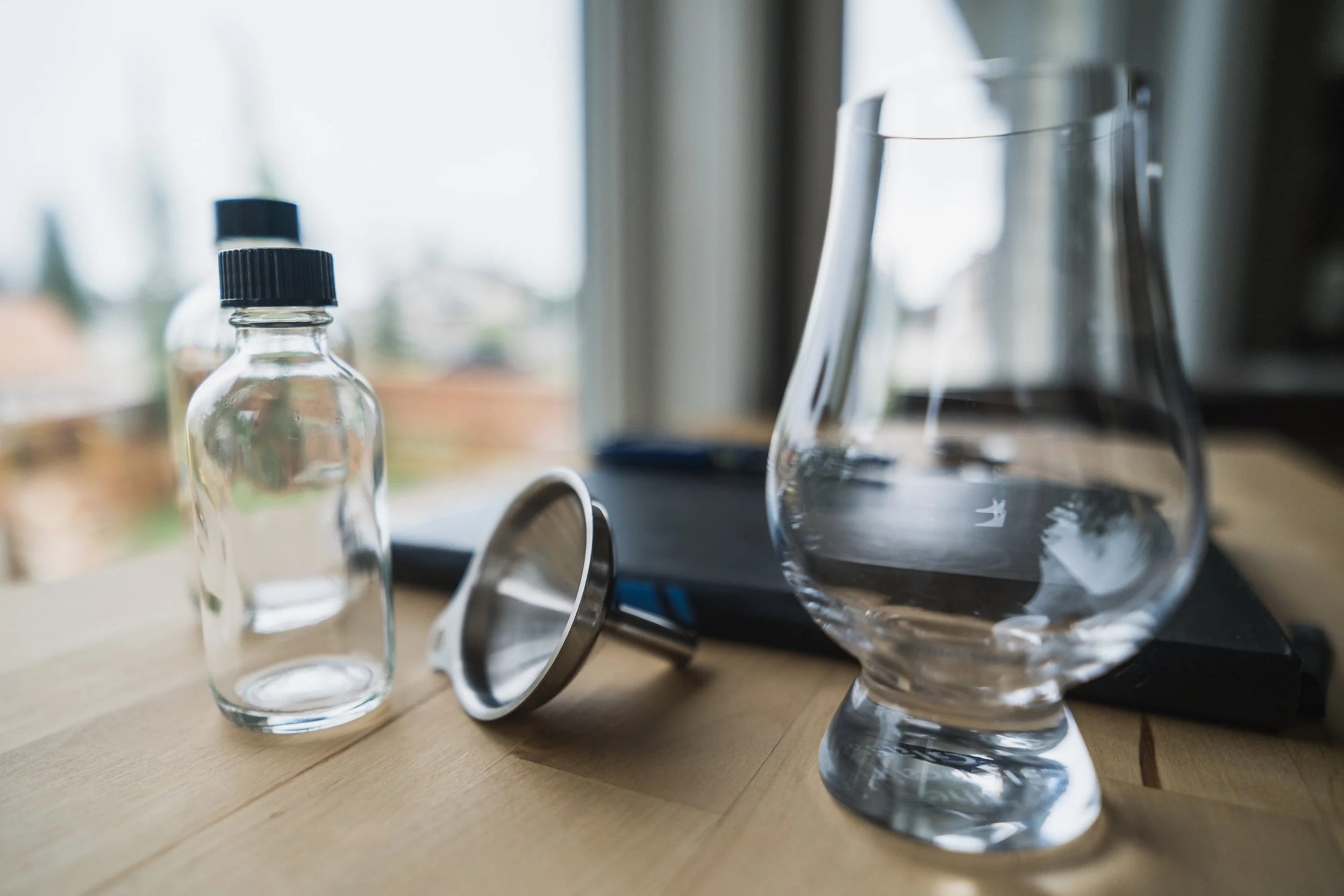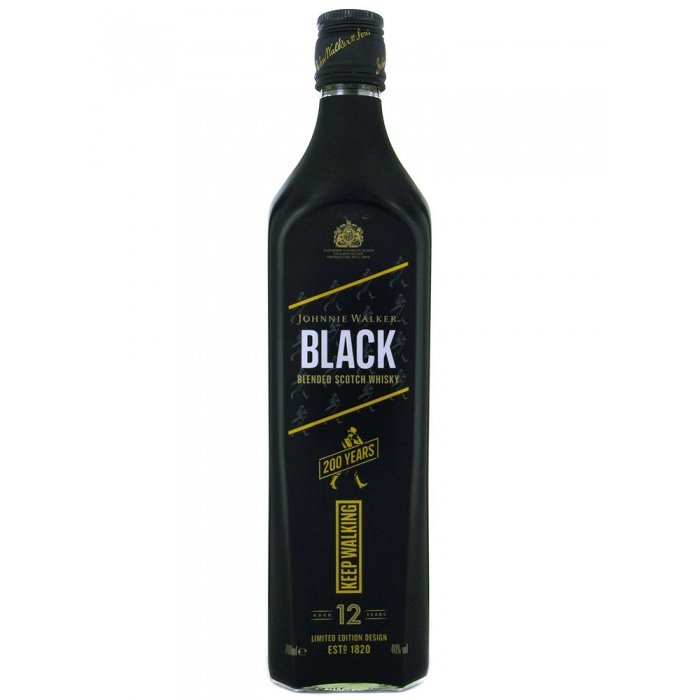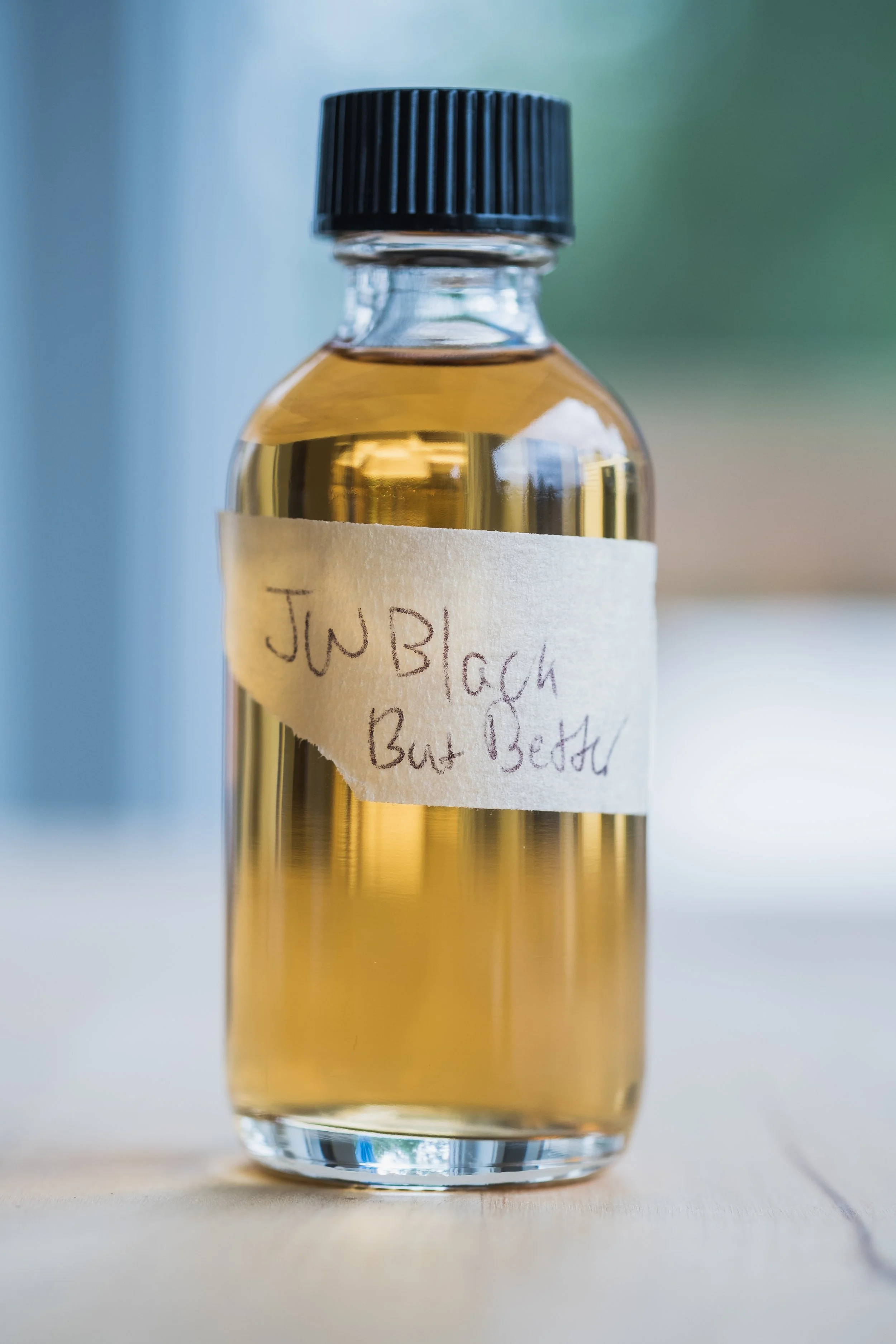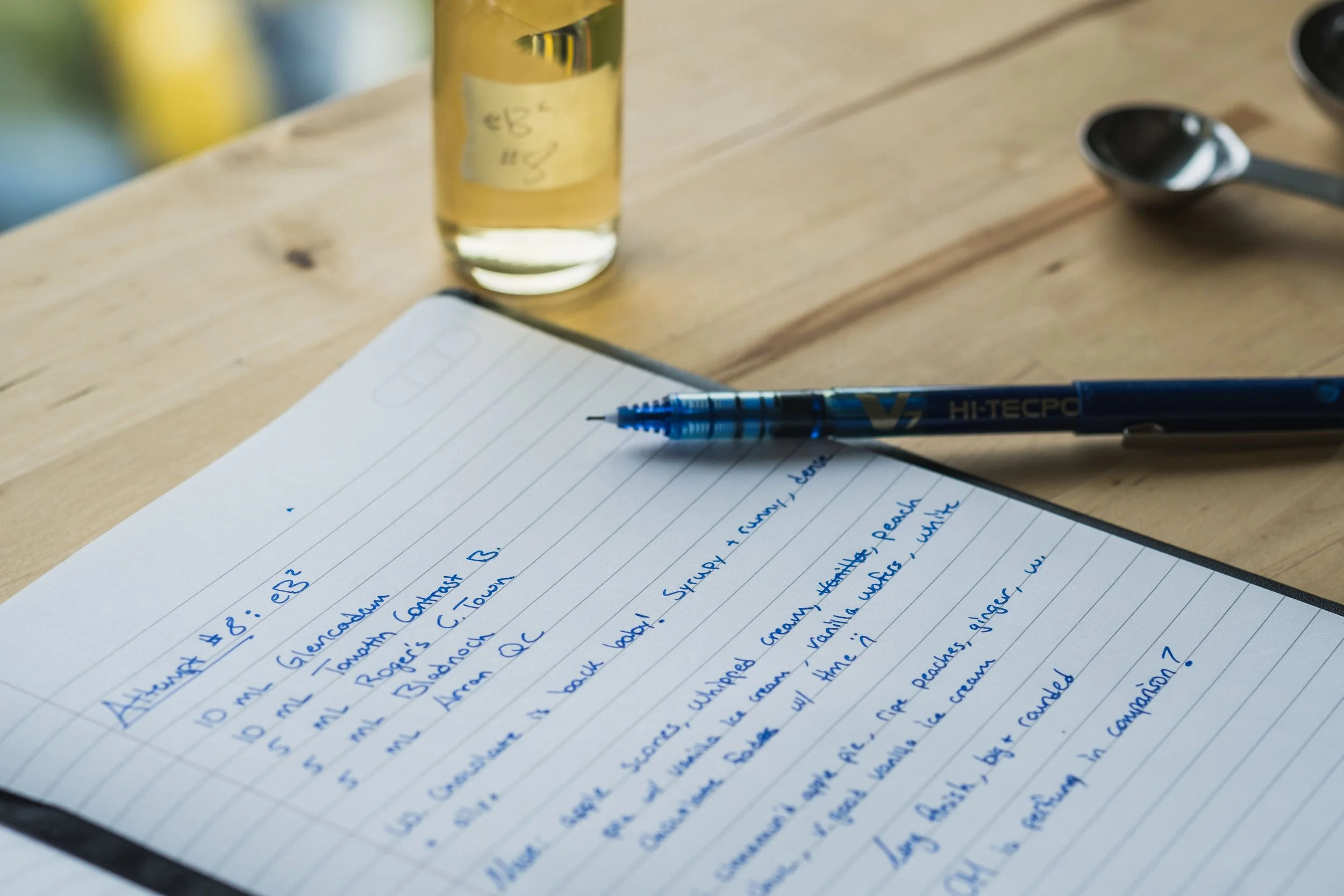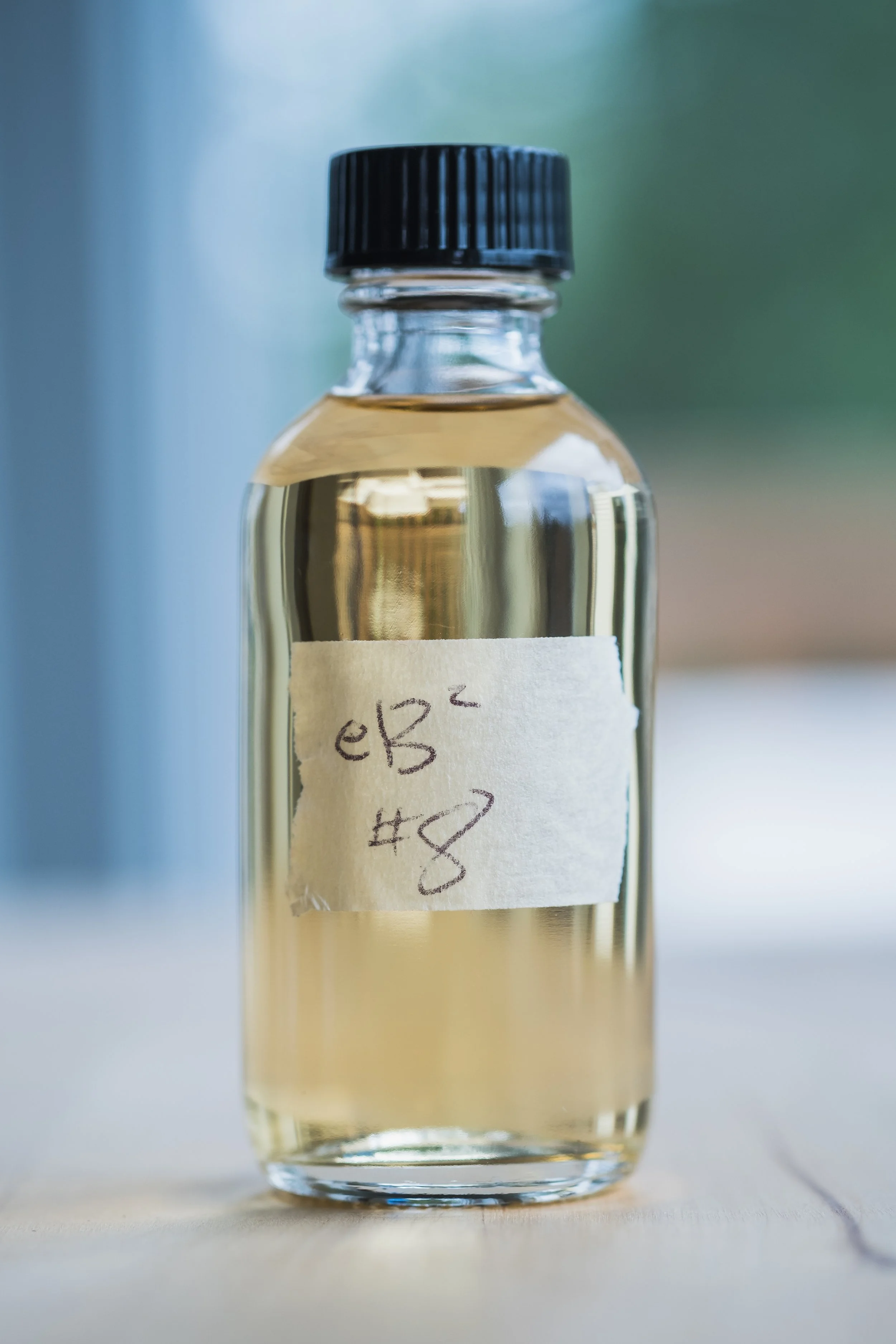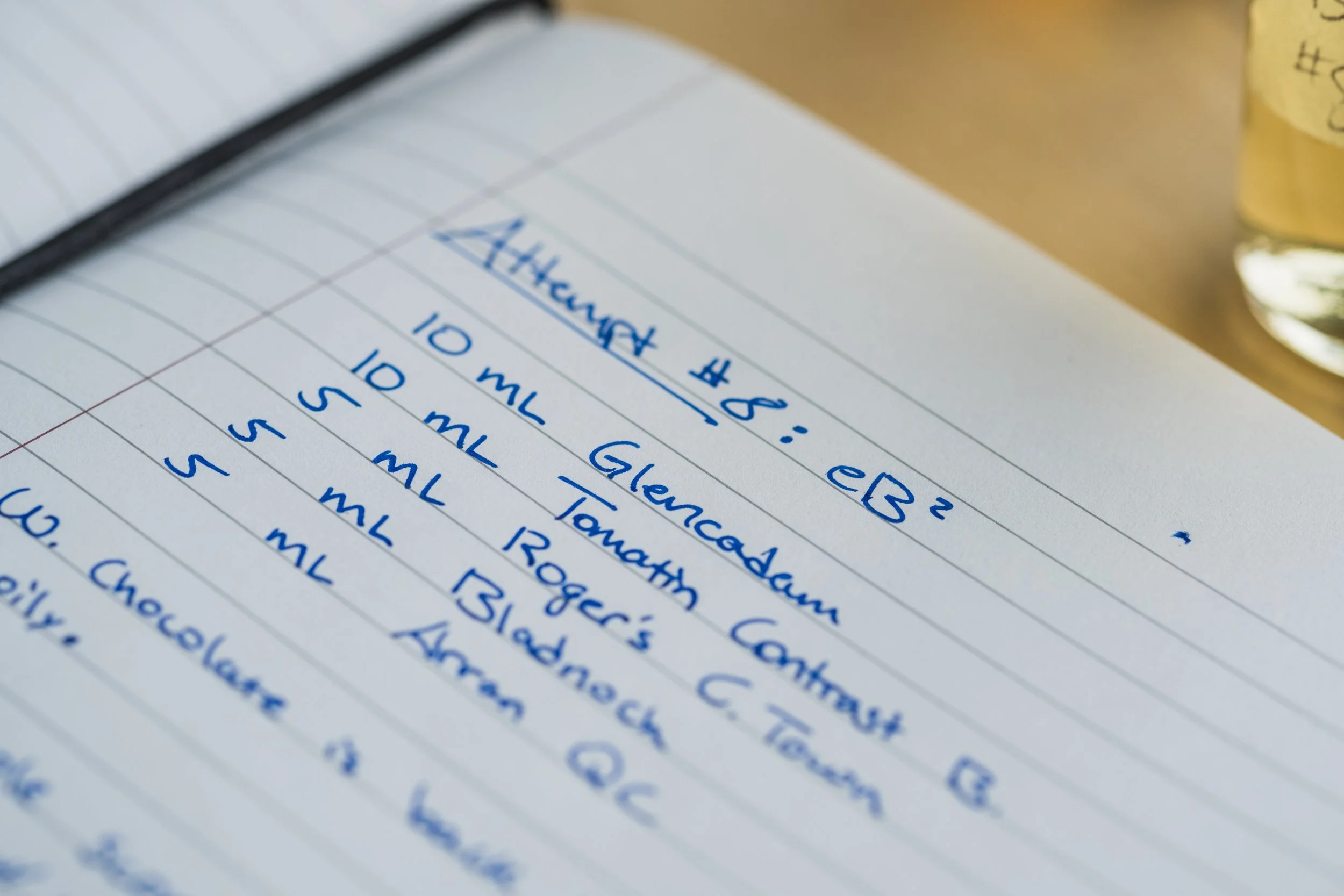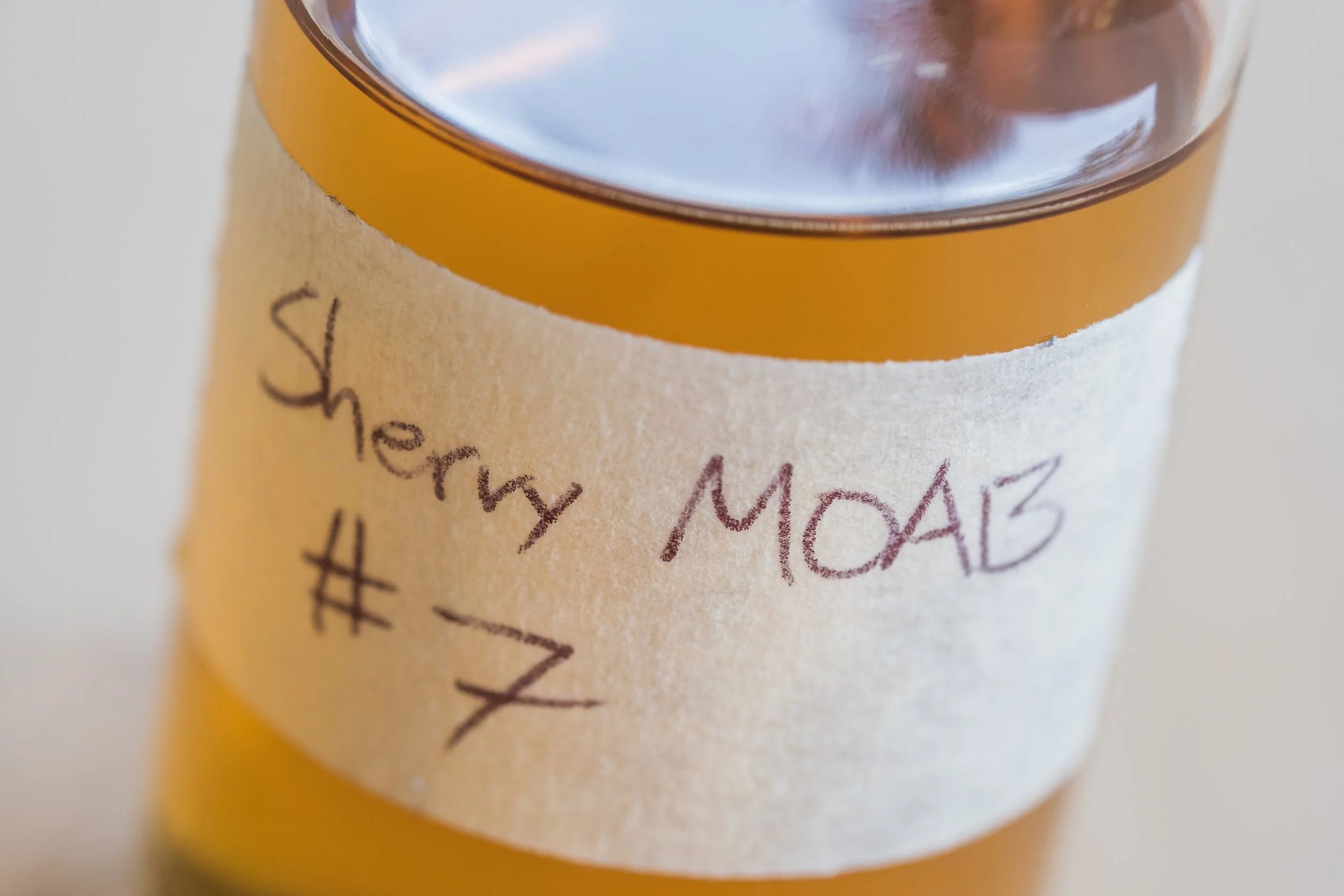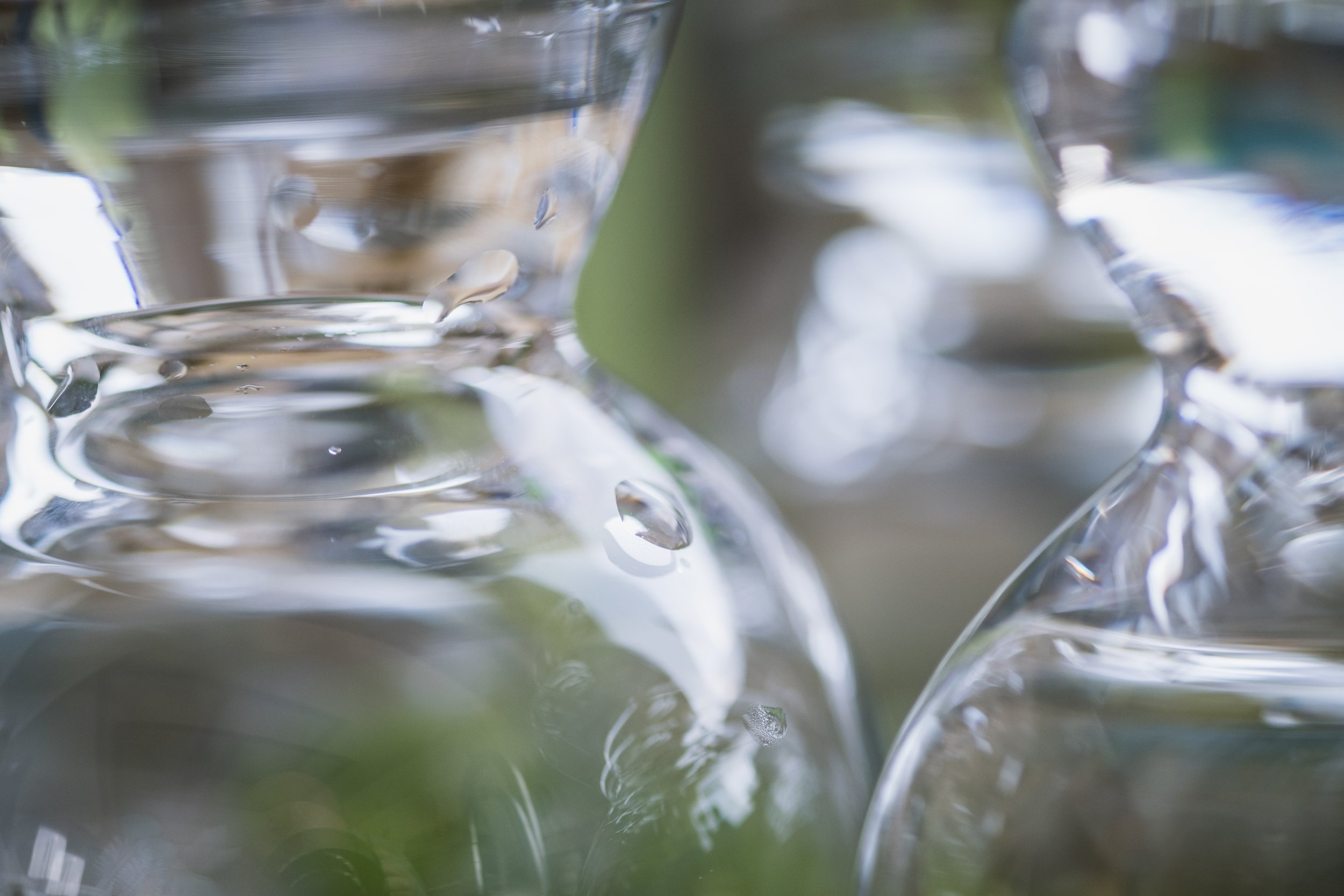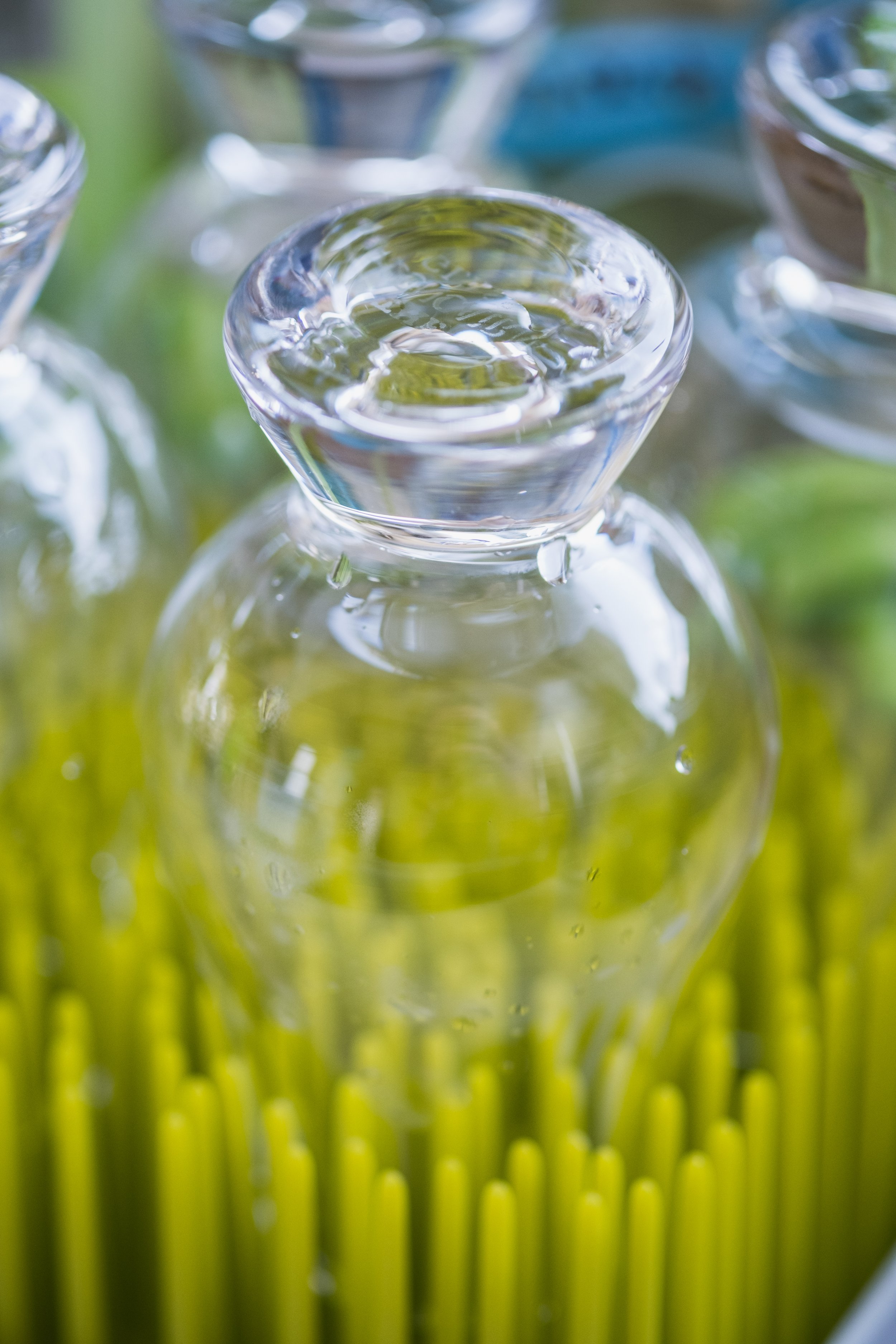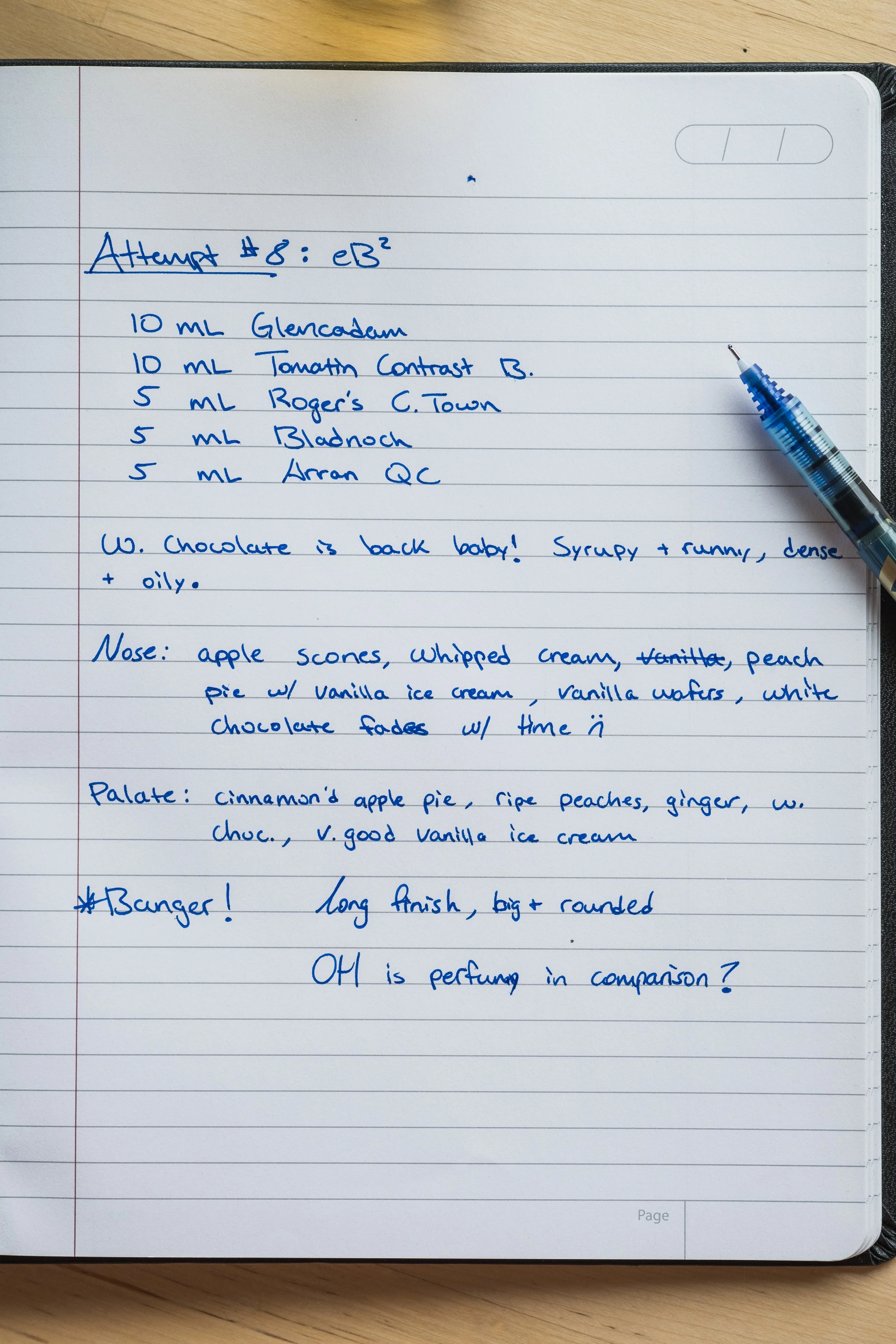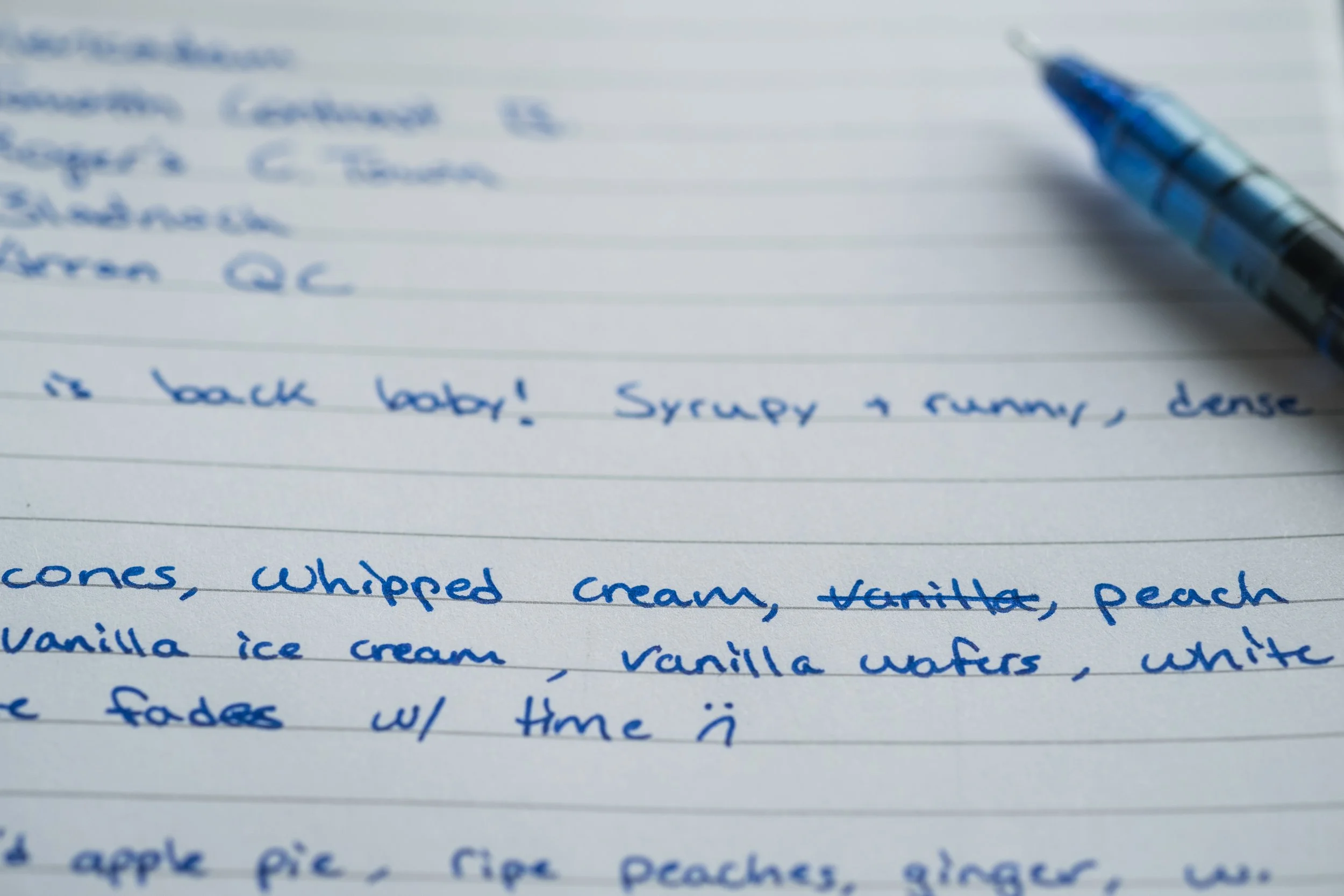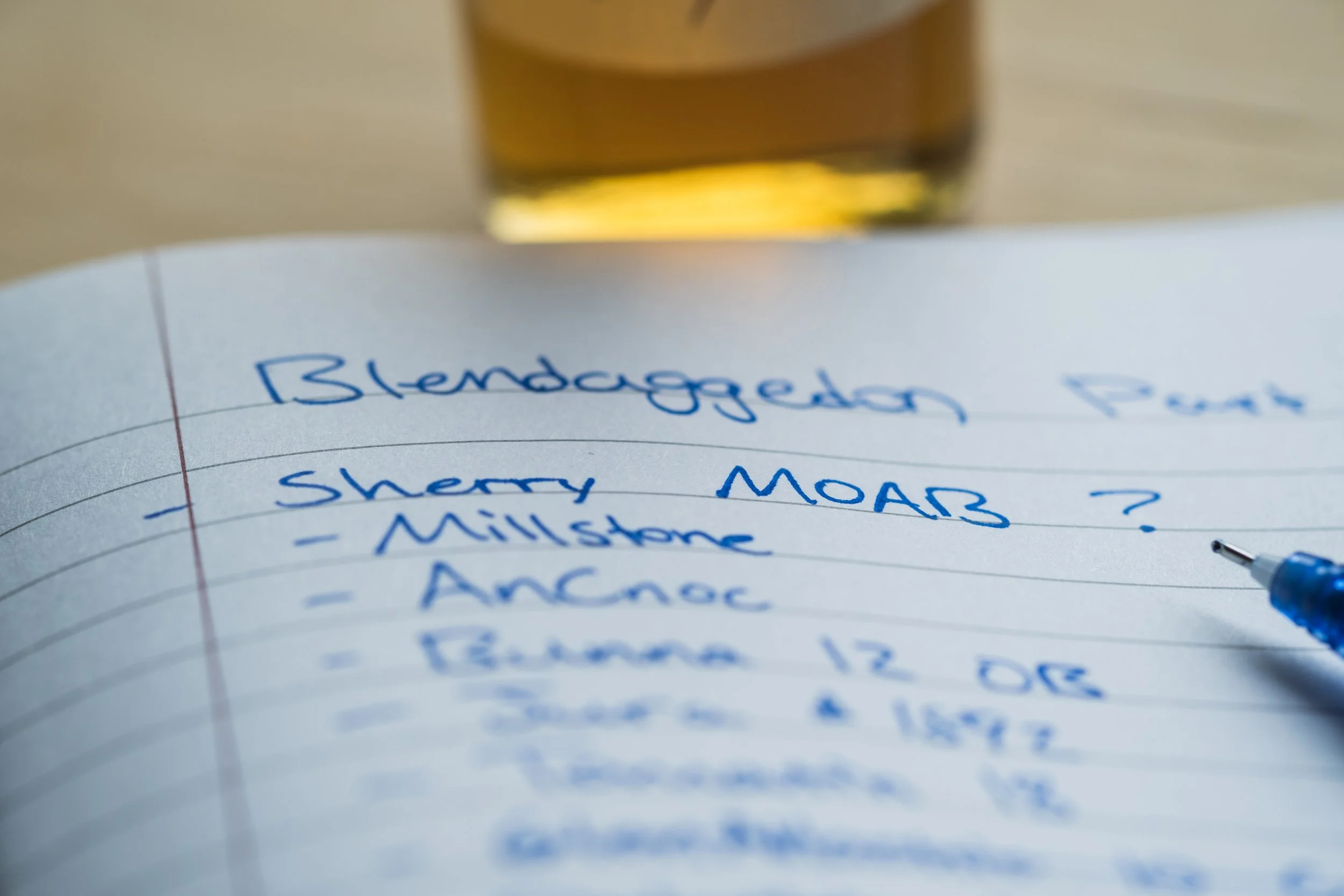Playing Whiskymaker
How hard can it be?
It’s easy to be critical, harder to be balanced
As someone who loves and writes about whisky, it’s often too easy for me to be critical of everything. If there’s a slight deficiency in something I can sometimes make a big deal out of it and I should remember to temper my negative findings with the overall quality of the whisky.
My day job involves creating tools or reports while also reviewing other people’s work. It’s all too easy to red pen someone's hard labour and I have to routinely check myself, asking if a revision is necessary to correct a critical error or if I’m just critiquing someone's writing style. It can be a difficult tightrope to walk, especially when people's feelings can be hurt when their document is returned full of red pen marks.
With whisky, it’s made by people for people and I should be cognisant of my thoughts toward a product. That doesn’t mean I turn every review into a beige article because I would lose the trust of the reader who’s expecting an honest and objective review.
When I assess a whisky and return a not-so-favourable score, I don’t really see the impact of my critique. Perhaps someone who’s poured everything they had into making a product would be disappointed by a low score, while giants such as Diageo or Pernod Ricard might simply not pay attention or seek out external opinions. They have a long-standing product line that routinely sells to the masses so why would they be chasing the opinion of the few?
I am hidden behind my keyboard and screen and it’s quite a contrast to my daily life where performance reviews, key performance indicators or other metrics are used to assess performance and teamwork - something that’s usually delivered tactfully face-to-face.
I’d like to put myself in the shoes of the other person - to fully appreciate someone’s product, you might try and make it yourself. Despite Tyree being a man of many talents, not everyone can be a distiller. However a large portion of the global whisky production centres around vatting and blending - and that’s something most of us can do at home.
Have a whisky you’re not connecting with? Try blending something with it to fill the gaps or cancel unwanted notes. Want to create something unique? Crack open some bottles and start assembling your own masterpiece.
Critiquing something without understanding the raw ingredients, manufacturing steps and blending challenges can be egregious and a sign of sheer wanton abandon against the principles of a fair and balanced review. What would it take to elevate the score of a whisky? Could you make a blend that would best the official distillery bottlings or offerings from the likes of Thompson Bros or Compass Box?
If I find myself gushing over a dram, I actively remind myself to look for alternate factors that may be viewed as a flaw to others. Following this balanced approach, where I assess the positive and negatives equally, if I truly cannot find something detrimental then I feel my thoughts are warranted.
I have a clear memory of my first real blending session a few years ago. With the last dregs of a Lagavulin 16, I tried mixing in various sherried drams to create a peat and sherry combo. Adding one sherried whisky was amazing, while adding a different distillery completely neutered the whole thing, turning it into a bland and nondescript whisky that belonged on the bottom shelf. It was eye-opening and the spark for my curiosity in whisky-making and this article.
My experimental method
I’ve tried to use official bottlings here wherever possible so anyone could recreate these blends at home. In some instances, I’ve used independent bottlings simply because I didn’t have an official release to hand. This also gave me an excuse to use up most of my small sample bottles I’ve been keeping. These have all been whiskies I’ve tried, keeping a small amount behind to connect with in the future.
I completed weighted volumetric calculations to determine the final blend’s ABV, including if any water was intentionally added to reach the target ABV. On top of creating multiple versions side-by-side, I also conducted a final check by creating a 30-60ml sample of my best attempt to rest for a few weeks or months, letting the ingredients get friendly with each other and the final flavours settle. These would be checked against my initial notes and any deviations would be noted.
Infinity bottles?
Creating an infinity bottle takes many forms. Some simply like to add various whiskies with no specific final flavour destination in mind, but my method is a little more detailed. Next time you’re planning an infinity bottle, you could try this method: Decant your samples into small airtight containers and once you’ve got a small collection of various whiskies, write down the intended flavour and texture profile you’re trying to create or duplicate and begin assembling your components. Get your hands on a liquid measuring cup/spoons, a calculator to determine blend ratios, and a notepad for your thoughts and you can begin to create a more detailed blend.
Apologies in advance. Some of the tasting and blending “notes” are more of a stream of consciousness of the first things that pop into my mind while blending. I’m sure you’ll understand.
Blend #1
Johnny Walker Black, but better.
During my blending exercises here, I thought it prudent to do a Google search to determine if anyone has been silly enough to try making this at home - or if I could find what the exact recipe of the Black is. It seems nobody has published a recipe, potentially indicating I’m either on to something or I’m incredibly foolish. I also found a wildly differing range of potential components that might be in this blended whisky. It was good fun reading through various review sites and product pages on this popular blend. I’ve extracted some interesting tidbits from various sources:
“Malt and wheat whisky from nearly as many as 40 distilleries… Caol Ila and Talisker are the single malt protagonists of this blend” - Vino.com
“... from the four corners of Scotland, JW Black has an unmistakably smooth, deep character”- Johnniewalker.com
“The component malts of JW, along with 36 other whisky’s, are Cardhu, Talisker, and Lagavulin… It’s a safe bet that the majority of malt here is Cardhu 12 yo” - scotchnoob.com
“The malts in the whisky are largely comprised of peated distilleries such as Talisker and Lagavulin but also the unsung hero Cardhu.” - distiller.com
“There are five distilleries that are considered its main building blocks. These cornerstones are Talisker, Caol Ila, Cragganmore and Glenkinchie for the malt portion and Cameronbridge for the grain whisky.” - kensingtonwinemarket.com
“Even if its recipe were revealed, it couldn’t be re-created by any other distiller” - thrillist.com
Well I say challenge accepted Thrillist. I should point out I’m not here to re-create the exact profile of Johnnie Walker Black, rather to make a fuller, more robust whisky.
Looking at the variety of suspected blend components coming from various Diageo distilleries, it seems nobody has a clear line on the source of the malt portion of the Black, nor do they have an indication of the volume split between malt and grain whisky components. So I’m interpreting this as an open invitation to use my artistic licence to create a But Better version (thanks J. Weissman for the title inspiration). For the first few tries, I tried to keep my blend components within the Diageo sphere.
I’ll also get a minor disclaimer out of the way: I didn’t have lots of ex-bourbon grain whiskies on hand. I had about 60ml of Compass Box Hedonism and the same of a That Boutique-y Whisky Company 11 year old North British, so the number of permutations I could run was limited. I didn’t have any Cameronbridge either. Not a huge loss but worth being transparent about.
Goal
A 43-46% fully natural Johnnie Walker Black that any enthusiast would actually be happy to have sitting on their shelves.
Ingredients:
North British (grain), That Boutique-y Whisky Company, 11 yo, ex-bourbon, 51.5 %ABV
Caol Ila, North Star Series 19, 8 yo, ex-bourbon & refill sherry, 51 %ABV
Mortlach, Carn Mor, 11 yo, first-fill Oloroso sherry, 54.3 %ABV
Dalwhinnie, North Star Series 16, first-fill Oloroso sherry, 52 %ABV
Compass Box Hedonism (grain), NAS, 43 %ABV
Inchgower, That Boutique-y Whisky Company Batch 3, 14 yo, ex-bourbon, 50.5 %ABV
Attempt #1:
10 mL (77%) North British
1 mL (8%) Caol Ila
2 mL (15%) Mortlach
2 mL water producing a final ABV of 45%
Notes: What an absolute stonker. I don’t want to water it down. Even when I added Caol Ila to the North British (sans Mortlach), it smelled heavenly. A sweet, maple syrup, bacon, bonfire with fresh squeezed lemons on the nose. The taste was a little too bitter or heavy on barrel char-like notes at natural strength so I added some water to bring it down into my targets.
Final verdict: Good, but the nose has less vanilla than the Johnnie Walker Black, however the smoke and Christmas cake notes are quite close. On the palate, I think I got fairly close including the slight peppery tingle that I get on the Black despite its low ABV. There’s a slight hollowness in the mid-palate. I should have left it at the blending strength of 52 %. It was smoother, more balanced, and full of flavour. The bitter notes I scribbled down may have dissipated with time.
Attempt #2:
15 mL (56%) North British
7 mL (26%) Dalwhinnie
3 mL (11%) Mortlach
2 mL (7%) Caol Ila
3 mL water producing a final ABV of 46%
Notes: The nose is a noticeably tighter than my first attempt, however the smell and ABV prickle is very close to the Black. Slightly menthol and citrusy with a distinct Christmas cake vibe with a whiff of smoke. The menthol and citrus notes stick out upon first mixing together but this is interesting. With more time in the glass, those menthol and citrus notes faded. On the palate, it’s lovely and balanced. Slightly smoky, sherry notes, and a wonderful zesty zing at natural blending strength.
After watering this, I’ve nailed the nose. Lovely balanced sherry and peat notes with a minor whiff of smoke accompanying clean raisins and sherry-like notes, with a mild ABV zip. The nose follows through from the palate with just the smallest touch of citrus zest. I’d happily smell and drink this any night.
Verdict: We are on the right track here so perhaps attempt #1 was too heavy on the grain component and needed more malt.
Attempt #3:
15 mL (75%) Compass Box Hedonism
3 mL (15%) Caol Ila
2 mL (10%) Mortlach
final ABV of 46% without needing any further dilution
I should have re-read to my notes from my second attempt and the trend of getting closer to the final goal with increasing malt content. It was worth a shot here, especially with some expensive stuff thrown into the mix, but this is the farthest away from Johnnie Walker Black so far. On the palate, it's jagged, spiky, slightly bitter and not overly pleasant or flavourful - however it was a worthwhile endeavour to see the difference in grain component.
Attempt #4:
15 mL (42%) Compass Box Hedonism
7 mL (19%) Dalwhinnie
3 mL (8%) Inchgower
5 mL (14%) Mortlach
4 mL (11%) Caol Ila
Added 2 mL of water for a final ABV of 45%
Notes: I originally mixed this with 3ml of the Mortlach but the nose didn’t have enough sherry-type notes (this Mortlach is from Carn Mor and the colour of a cola so it’s pretty potent). I added an extra 2ml and that brought everything into balance. In general, I find the Hedonism harder to blend with than the North British used in the previous attempts. This could be because Hedonism is already a blend of Cameronbridge, North British, Girvan, and Port Dundas so when the malt components are added, it’s reacting more with the variety of grains components, rather than just a single distillery. No idea if I’m right about that though. If I’m going to critique whiskies, I at least need understand the challenges in assembling a product.
Verdict: this is the recipe I’m settling on. There is no menthol or citrus notes like I found in attempt #2. The smoke is very much in the background, layered amongst the sweeter sherry-driven notes. An undertone of vanilla ties everything together. On the palate, it’s everything I want it to be. It has just the right amount of peppery zing, amping up the vanilla, raisins, Christmas cake, citrus, and light smoke notes. The finish is medium and is a mild medley of a non-descript sherry-like sweetness and dry peat smoke. A perfect sipper that provides just a little bit extra than the standard JW Black in my opinion.
Fast-forward review: After creating a 60ml batch of attempt #4 and resting in glass for four months:
Nose
Wisps of smoke with a touch of earthiness, sherry sweetness, and honeycomb. Touch of black pepper and vanilla. It smells like a more rounded Talisker. Resting in glass did take some spiky aspects off, turning this into a quality nosing experience.
Palate
The palate didn’t really change. It has just the right amount of peppery zing, vanilla, raisins, Christmas cake, citrus, and light smoke notes. The citrus takes the form of orange zest/rind in an Old Fashioned cocktail. Again, my mind is wandering to Talisker as a reference point, except my blend seems to be rounder and bolder. The finish is medium and has a mild medley of a non-descript sherry sweetness and dry peat smoke.
The Dregs
I think I nailed this blend. It’s delicious and rounded with a perfect amount of peppery bite that makes it well suited for sipping neat or in a cocktail. I’ve long since finished my Johnnie Walker Black so I’ve lost the ability to compare side-by-side but from memory, this is still very close to the original profile.
For fun, I’ve included a volumetrically-weighted price of my blend: CAD $106 for a 700ml bottle, or almost exactly double the price of Johnnie Walker Black in my area. This is the full retail price I paid for these bottles, including supply chain fees and retail markup. Not knowing exactly how much these various components cost, I think my blend’s price is in line with some rough order of magnitude calcs.
Retail markups are usually 40%, the cost of shipping is not insignificant to Canada, and independent bottlers (all my malts in this experiment were IBs) do not get much in the way of volume discounts, marketing, government fees etc. I think my blend could be made by Diageo and maybe, possibly, be sold for a profit. Plus, the weighted average age of my blend is around 8-10 years old.
I’d probably score the Johnnie Walker Black official bottling around 4-4.5. I think my blend is 1-1.5 points higher to earns a 6/10 score. Very happy with how it turned out.
Score: 6/10 BB
Blend #2
Dalmore Port Wood+
I’ve previously reviewed the Dalmore Port Wood and found it lacking. For such a recognisable brand at a not insignificant price regardless of expression, many aficionados routinely dismiss Dalmore. I’ve tried many of them and been disappointed by all. The Port Wood was the better of the more entry-level options, however I gave it a score of 4/10 when considering the price I’d pay.
For those that remember from my previous short-stories, one of my hobbies revolves around building and modifying vehicles. There’s a distinctive modification stream within the enthusiasts and aftermarket that’s aimed at creating a better version of the original equipment manufacturer (OEM) vehicle, appropriately called an OEM plus (OEM+) build. It’s well known that within many industries like automotive and whisky, official products are engineered to fit a variety of design and financial considerations, often resulting in a significantly compromised product.
So when enthusiasts get their hands on it, some infusion of new ideas, external components, or plain love and dedication often results in an improved product, stripping away some of the compromises. So similar to this ethos, could I improve upon the original manufacturer's official product and create a “plus” version of it? I’m aiming to add no more than 20-25% of other whiskies, trying to keep the core facets of the Dalmore intact and amping up some of the more lacklustre aspects.
Ingredients:
Dalmore Port Wood, NAS, 46.5 %ABV
Spey Tenne Tawny Port, NAS, 46 %ABV
GlenAllachie Ruby Port Wood, 12 yo, 48 %ABV
Tomatin Port Wood, 14 yo, 46 %ABV
Arran Port Cask, NAS, 50 %ABV
Amrut Portonova, NAS, 48 %ABV
Attempt #1:
15 mL (71%) Dalmore
2 mL (10%) Spey
2 mL (10%) GlenAllachie
2 mL (10%) Tomatin
I nosed this blend with each addition of a new whisky, following the above progression. Very little changed with the addition of the Spey, with a small uptick in vanilla. The GlenAllachie really changed things, significantly amping up the syrupy and berry type notes. I felt this really came into balance with the addition of the Tomatin. Rich, round, and luscious. Brown sugar and toffee give way to baked apple pie mounded with a raspberry compote with vanilla ice cream served on the side.
The 46.5 % ABV is undetectable and I love the nose. The palate is a mirror of the nose, with the addition of cinnamon and nutmeg. The finish is medium length and brings red apple peels to the party, riding a wave of raspberry and cinnamon. For me, this is a ten-fold improvement in palate performance over the watery Dalmore, despite the addition of only 30% other whiskies. I might have to make a blend of these to enjoy on my own; however this whisky is straying too far from the Dalmore+ goal, especially with the apple notes.
Attempt #2:
15 mL (71%) Dalmore
2 mL (10%) Arran
2 mL (10%) Amrut
2 mL (10%) Tomatin
Similar to attempt #1, however with the Arran this time, little change in the nose was immediately observed. With time, the blend settled down, amping up the red berries, cherries, and dark chocolate with a touch of vanilla. Even with just 2ml of Arran, it makes its presence felt.
The Amrut brought more cask barrel char. Finally, adding a touch of Tomatin and it’s back to being a banger. Compared to attempt #1, it’s slightly darker on the nose, with dark toffee, dark almost burnt caramel, and chocolate ganache with red berry jam. The vanilla is toned down and the apple is non-existent. With time, some simple syrup pops up. Side-by-side with attempt #2, they are similar in nose quality. On the palate, it’s juicy and slightly thinner than attempt #1. The palate is more muddled than #1, offering up less distinctive notes. Charred oak, nutmeg, chocolate ganache, with a touch of strawberry and raspberry compote. The finish is very long, with some dark chocolate, cherries, and red berries.
The Arran is still prominent and potent. In the spirit of the OEM+/Dalmore+ goal, I feel that the Arran is too different and overpowers the Dalmore spirit, bringing too much darkness to the mix so I feel that excluding it from future blends would stay true to the Dalmore+ goal.
I like the length of finish of attempt #2 but the flavours of attempt #1. Plus, I’m starting to think the Tomatin might be the magic ingredient in this whole mess. Let’s hone in on some of the dominant variables while trying to get closer to my original goals of 75-80% Dalmore in the blend.
Attempt #3:
15 mL (79%) Dalmore
2 mL (11%) GlenAllachie
2 mL (11%) Tomatin
This is getting close to the Dalmore+ ethos that I set out to make. Perhaps I went too crazy with the ingredients in the first two attempts (even though they were delicious in their own way). The nose is strawberry and raspberry jam, Werther’s caramel candies, white chocolate vanilla scone, with a trace of almond biscotti at the end.
It’s simple, just like the original Dalmore, but is more rounded and richer. There’s no alcohol tingle, providing a pleasant nosing experience for all. On the palate, raspberry compote, cinnamon, and a fruit leather are found. That’s it. The palate is a let-down compared to the nose, much like the original Dalmore. The finish is short and vanishes without a trace. I keep waiting for something to pop up but it never happens. Back to the drawing board. This blend is eerily similar to attempt #1, making me think the Spey was holding everything together. Very interesting.
Since I’m working off a sample of Dalmore I bottled some time ago, and I’ve consumed nearly half of it so far, I’ve got to start dialling into the final composition.
Attempt #4:
15 mL (71%) Dalmore
3 mL (14%) Spey
3 mL (14%) Tomatin
After letting them co-mingle for 10 minutes, the nose is vanilla, red berry compote, strawberry strudel, and cinnamon before a small amount of barrel char-like notes. The palate is the best representation of a Dalmore+ blend yet, what a surprise that the NAS Spey Tenne pulls everything together.
It’s a swirling mix of raspberry pie, vanilla whipped cream, dusting of cinnamon, and out of nowhere, a splash of milk chocolate dipped strawberries. The finish is medium and pleasant, riding the strawberries, chocolate, and cinnamon but now accompanied with a touch of brown sugar. Very delicious and absolutely nails my Dalmore Port Wood+ goal.
After resting in glass for two weeks:
Nose
The nose is the same as attempt #4 however the barrel char notes have disappeared, leaving behind a dense and rounded nose.
Palate
The palate changed significantly from the in-glass blend, not in terms of new flavours but in terms of relative intensity compared to others. The strawberries and cinnamon are now up front, providing a nice juicy and tingly experience. The raspberries are now slightly candied with white sugar and not jammy. The vanilla is now decreased along with the chocolate.
The finish is still medium in length, with fresh strawberries and cinnamon. The finish is unobtrusive and just goes away gracefully, something that would likely still satisfy most Dalmore clientele while providing the necessary improvement for us anoraks to make this Dalmore enjoyable.
The Dregs
Tthe Dalmore didn’t like playing with the first component added to the mix. For the first 30 seconds it was highly effuse with unpleasant aromas of hot cardboard, acetone, and hot hay dust. Only after a minute did the flavours start emerging from the unpleasant emissions. I’m happy I went through the exercise of creating this only to discover that the Dalmore didn’t play well with others in the sandbox. I wonder if it's a port-related thing or a Dalmore-related thing?
I think this is easily a 6/10 in experience now. If the price was around $110-120 CAD (£65-70) it would be a whisky I’d purchase but at Dalmore’s current pricing of the Port Wood in my area (£85)? I wouldn’t buy it again although it is objectively a good whisky.
Score: 6/10 BB
Blend #3
eB² (Ex-bourbon Bomb)
The inspiration for this blend comes from Compass Box’s Orchard House - a blend that made some waves when released. I enjoy it, especially during the summer and would give it 6-7/10. But could I out-do the team at Compass Box, who have better senses than me and significantly larger whisky stocks to pick from? I do like a good challenge and this is arguably one of the better products I could try and one-up as the people at Compass Box are likely less hampered by the boardroom suits than the Whyte & Mackay Dalmore Port Wood?
Goal: Create a summer fruit basket-type of whisky. For me, that means a refreshing vanilla cream, light-fleshed fruit, and a dash of red berries. Deviating from the Orchard House would be the absence of a touch of smokiness. I’m looking for something clean and fresh.
Ingredients:
Roger’s Campbeltown blended malt, 6 yo, ex-bourbon, 54 %ABV
Bladnoch, Gordon & Macphail, 19 yo, ex-bourbon, 53.8 %ABV
Linkwood, James Eadie, 10 yo, ex-bourbon, 46 %ABV
Glenlossie, Carn Mor, 12 yo, red wine barriques, 47.5 %ABV
Ardlair, A.D. Rattray, 11 yo, ex-bourbon, 55.7 %ABV
Compass Box Canvas, NAS, ex-bourbon & Vino Naranja, 46 %ABV
Glencadam 15 yo, ex-bourbon, 46 %ABV
Tomatin Contrast Bourbon, NAS, ex-bourbon, 46 %ABV
Glentauchers, Gordon & Macphail, 15 yo, refill ex-bourbon, 57.6 %ABV
Arran Quarter Cask, NAS, ex-bourbon, 56.2 %ABV
Tomatin 14 yo, ex-bourbon & refill port, 46 %ABV
I’ve got other bottles to use however I was trying to use up some of my sample bottles and had to cut off the number of permutations at some point.
Attempt #1:
7 mL (35%) Roger’s Campbeltown
7 mL (35%) Linkwood
4 mL (20%) Bladnoch
1 mL (5%) Caol Ila (North Star Series 19)
1 mL water
Super bright and fruity. Instead of fresh white fleshed fruit, it’s a tad darker, syrupy, and more like slightly cooked fruits. Less vanilla than Orchard House. More balanced, more zing, more fruits. Banger. Super good. Similar, but not much better than the original. It was interesting that I was able to get relatively close to Orchard House and now that I’ve got my bearings, back to the drawing board sans peat.
Attempt #2:
10 mL (65%) Glencadam 15
5 mL (22%) Linkwood
3 mL (13%) Compass Box Canvas
Absolutely lovely. A Solid 7/10. Some drops of water make the fruits jump out of the glass. Something for everyone, straight strength or with water.
Attempt #3:
15 mL (60%) Glenlossie
5 mL (20%) Linkwood
5 mL (20%) Ardlair
Might be on to something here. Lovely and syrupy. Less white fresh fruits than #2. A few raspberries tossed in. The Ardlair weirdness is coming in strong with papaya and a good dollop of creaminess. The nose is stellar, but the palate does deviate from my goal. Perhaps I need to remove the Ardlair and amp up with another white fruit bottle. Good, but not along the lines of the Compass Box creation. The Ardlair brings up the creaminess significantly, something I enjoy, however its unique flavours do intrude into the experience more than I would like.
Attempt #4:
15 mL (39%) Glenlossie
5 mL (13%) Linkwood
3 mL (8%) Compass Box Canvas
10 mL (26%) Glencadam 15
It’s currently between this and #2 so far. More “red” and brown sugar syrup than #2. Probably a more appealing blend to the masses as it could be mistaken as having some sherry in it. This one changes with time, reducing the sherry-like notes and making it more white fruit-like. Would be interesting to see how this one amalgamates in glass. Regardless, I’m straying too far from the ex-bourbon bomb goal. Too many red fruits and too little orchard fruits. Between Attempts #2-4, I’ve drawn the boundary lines for the flavour and influence goals. Now it’s time to start zeroing in the bullseye and bring in some new players to the game. This may or may not be the smartest move introducing new whiskies into the list… but that’s the fun of blending.
Attempt #5:
10 mL (29%) Glencadam
10 mL (29%) Tomatin Contrast Bourbon
5 mL (14%) Arran Quarter Cask
5 mL (14%) Bladnoch
5 mL (14%) Glenlossie
Without the Glenlossie (red berries), it’s sitting at 49 % ABV and it’s wonderful on the nose. Vanilla, whipped cream, white chocolate, sliced white grapes dotting a red apple and pear medley, simple syrup, and uplifting lemon citrus zest. If I could smell only one whisky for the rest of my life, I would be supremely happy with this one. The palate is a mirror of the nose with a nice zip to it.
After adding the Glenlossie to bring in some red berries, it sits at 48.8 % ABV. I didn’t think it could get better, but it did. Take the above nose and add in a lovely and gentle addition of raspberry and strawberry jam but drop the white chocolate notes. The “red” stuff is nuanced but there, hitting my ideal sweet spot. Not so happy about the cancellation of the white chocolate notes however. On the palate, the first half of the experience has been tamed down. The zip, apples/pears, and vanilla has been toned down quite a bit, with the elimination of the citrus. There is an addition of char to the end of the experience. The finish is medium-long and sticky, consisting of strawberry/raspberry jam and vanilla. After 30 minutes in the glass, it’s an aromatic and delicious whisky, however it’s more dominated by the red wine barrique Glenlossie. It doesn’t meet the goal I’ve set out for myself.
I like this Glenlossie on its own but it might be playing tricks with me here. Should I drop the volume of Glenlossie, bring in another source of red berries like the Tomatin’s 14, or scrap my goal of red berries because the initial blend (without Glenlossie) was very good? Conundrums. I’m going to try the Tomatin 14.
Attempt #6:
10 mL (29%) Glencadam
10 mL (29%) Tomatin Contrast Bourbon
5 mL (14%) Arran Quarter Cask
5 mL (14%) Bladnoch
5 mL (14%) Tomatin 14 yo
On the nose, it took quite a while for this one to settle in after mixing it all together. Initial nose was slightly offensive with some acetone and vegetal like notes jumping out. After five minutes, it calmed down and was quite muted. Red apples, vanilla cream, red berry compote, hint of brown sugar. On the palate, everything is playing more harmoniously integrated than the Glenlossie, the Tomatin 14 gelled everything together.
It’s quite spicy on the tongue with red apple skins and a cayenne dusted berry compote - although the cayenne pepper obscures many nuances. Going back to #5 and it’s positively benign compared to the palate power of #6. Attempt #6 was a bust and not successful from my perspective. Attempt #5 was much much better, but still off target.
I decided to scratch the goal of including any red notes in here. I either have too potent “red note” bottles on my shelf or I don’t have distilleries that play well with each other. Case in point was the offensive vapours coming from the glass of #6 upon first blending. Perhaps that was a sign that things to come where some lovely little chemical compounds are not playing well with each other? Going forward, I’m going for a pure eB2 expression. All ex-bourbon and going closer to Attempt #2.
Attempt #7:
10 mL (29%) Glencadam
10 mL (29%) Tomatin Contrast Bourbon
5 mL (14%) Roger’s Campbeltown
5 mL (14%) Glentauchers
5 mL (14%) Linkwood
The nose is a little tighter. It definitely needs some time to become cohesive. After 10 minutes, it becomes beautiful, expressive, and round on the nose. Honey, sweet cream, peaches, vanilla, and a baked apple without any prickle despite the ABV. Upon first taste, it was delicious. This is more honeyed, layered with peaches, baked apple pie, whipped cream, vanilla, and a healthy peppery zip that I suspect is coming from the Glentauchers. My first thought was to compare to #5 without the Glenlossie component. The nose is less brittle and is sweeter, more “golden”, and rounder. The palate is denser, sweeter, and darker. Not a bad thing, just different. I think the perfect combination here will be a mix of attempt #5 and #7, I just have to identify what each component is doing to tune out the elements that are distracting and if possible, bring back the white chocolate from #5.
Attempt #8:
10 mL (29%) Glencadam
10 mL (29%) Tomatin Contrast Bourbon
5 mL (14%) Roger’s Campbeltown
5 mL (14%) Bladnoch
5 mL (14%) Arran QC
Nose
Upon first vatting, the white chocolate notes are back and prominent. With some time they do fade but are still there. Whipped cream, vanilla wafers, apple scones, fresh baked peach cobbler with vanilla ice cream and runny honey. For me, it’s far more syrupy, dense, and rounded compared to Orchard House.
Palate
It’s luscious, oily, and has a long finish, an improvement over the relatively short and clean finish of Orchard House in my opinion. There’s ripe peaches, white chocolate, apple pie with the perfect amount of cinnamon, touch of ginger and high-quality vanilla ice cream.
To me, the Orchard House is more floral and brighter on the nose. It’s almost perfume-like in comparison with the smell akin to springtime flower blossoms. On the palate, the Compass Box is perhaps a bit brighter with the fruits but is much thinner and shorter in finish. The tiniest waft of clean smoke is detectable.
It’s so delicious and freakishly moreish at 49.7 % that I’m wondering if I should stop here or see if I invite the Linkwood back to the party for more light zest.
Attempt #9:
10 mL (25%) Glencadam
10 mL (25%) Tomatin Contrast Bourbon
5 mL (13%) Roger’s Campbeltown
5 mL (13%) Bladnoch
5 mL (13%) Arran QC
5 mL (13%) Linkwood
Same as #8 but now with an increase in the honey notes plus some indistinct citrus zest. Not much different, but noticeable side-by-side. On the palate, the addition of the Linkwood is much more noticeable. There are lemon citrus notes, replacing the apple notes in their entirety. The cinnamon notes have transformed to white pepper, making this drink hotter than the 49.2 % might suggest. The flavours are aligned more with the Orchard house but the white pepper is annoying.
Verdict: I’m settling on attempt #8. It’s delicious, but lacks the red berry notes I set out to achieve but I’m still happy with the end product. I bet I could keep blending this one until my palate went numb and my nose blinded. Perhaps in the future, I might consider using only core range bottlings to make my blend, providing a somewhat repeatable recipe to follow that is greater than the sum of its parts; however it would be difficult to locate unpeated ex-bourbon only 46 % or higher offerings.
There’s the Glencadam (10, 15, and 18 of which is impossible for me to find), Arran 10 and Quarter Cask, Tobermory 10, Orchard House, Loch Lomond Inchmurrin, Deanston Virgin Oak & 12 year old, Tomatin Legacy and AnCnoc 12. Now that I’ve gone through that metal listing exercise, it's eye-opening that more core range official releases are not available in purely ex-bourbon wood. If you know of more, please let me know. Regardless, a greater challenge than my eB2 bottling here would be to create a superior blend from these readily-available bottles. I think I’d be handicapped by some of the low bottling strengths of some of the components, but it could turn out to be wonderful. Or not. That’s the beauty and curse of blending and whisky making.
Attempt #8 (rested in glass for 2 weeks):
Nose
Whipped cream, red apples dusted with cinnamon, fresh baked peach cobbler with vanilla ice cream, runny honey. Syrupy, dense, and rounded, with a “cool” smelling aspect.
Palate
The palate didn’t change. Ripe peaches, white chocolate, apple pie with cinnamon, ginger, vanilla ice cream. Luscious, oily, and has a long finish.
Admittedly, this blend was difficult to make and I could have easily done half a dozen more iterations so I doff my hat to the team at Orchard House for assembling a very good blend. This blend earns its 7/10 score. Now off I go to use up my remaining Glencadam 15 to make more of this blend for the shelf.
Score: 7/10 BB
Blend #4
Sherry M.O.A.B.
A MOAB in military speak is the Mass Ordnance Air Blast Bomb, or I prefer its more common nickname, the Mother Of All Bombs. It’s a large yield bomb originally weighing just shy of 10,000kg. Such a destructive creation, however I thought it an apt title to create the ultimate sherry bomb with my own twist.
When I think of my ultimate sherry MOAB, I’m focussing on my goal of a very long finish with excellent mouthfeel and high intensity of flavours. The flavour goals would be a balance of fresher sherry tastes and oxidised leather notes, with a preference towards the latter. I’d be flexible on the ABV and willing to dilute things. If I wanted to add peat or smoke, I’d do it with the deftest touch.
I assembled various unpeated, near 100% sherry maturation whiskies that I’d been collecting over the years for this particular experiment.
Ingredients:
AnCnoc 2001-2015, 14 yo, 46 %ABV → oranges & spicy tannins
Bunnahabhain, A.D. Rattray, 12 yo, 66.7 %ABV → salted caramel rocket fuel
Bunnahabhain 12 yo, 46.3 %ABV → everyone’s favourite
Dailuaine, Gordon & Macphail Connoisseur’s Choice, 13 yo, 59.4 %ABV, first-fill sherry HHD → nuts, butterscotch, chocolate
Dalwhinnie, North Star Series 16, 13 yo, 52 %ABV, hogshead → cola cubes, jujubes, lemon drizzle
Edradour, Signatory Unchillfiltered Collection, 10 yo, 46 %ABV → generic sherry
GlenAllachie, Cask Strength Batch 6, 10 yo, 57.8 %ABV → intense, fresh, juicy
Glendronach, 2009 Canada Exclusive, 10 yo, 43 %ABV, PX sherry → soft, gentle, nondescript compared to others in list
Glenfarclas 21 yo, 43 %ABV → stewed fruits, nondescript compared to others in list
Glengoyne, Cask Strength Batch 8, NAS, 59.2 %ABV → butterscotch, rich & spicy
Jura Distillery Cask #1892, 14 yo, 57.2 %ABV → molasses, nutty bitterness, sticky
Millstone, Special Rel. #23, 7 yo, 51.63 %ABV, PX sherry → dark, leathery, citrusy, lucious. Perfect on its own, and a good base for the blend.
Mortlach, Carn Mor, 11 yo, 54.3 %ABV, first-fill Oloroso sherry → nutty, brown sugar, rich, spicy… I forgot how good this bottling was.
North Star Supersonic Mach 3 (blended malt), NAS, 55 %ABV → clean, juicy, intense
Royal Brackla, La Maison Du Whisky Collection #4.5, 13 yo, 48 %ABV, first-fill sherry butt → rich & spicy
Springbank 15 yo, batch 15.09.22, 46 %ABV → funky and rich
Strathisla, Gordon & Macphail Connoisseur’s Choice, 12 yo, 56.9 %ABV, first-fill sherry → ginger, red berries
Teaninich, James Eadie, 10 yo, 56.9 %ABV, Palo Cortado finish → subtle malty & strawberries, spice
Tomatin 18 yo, 46 %ABV, Oloroso sherry → vanilla & layers of sherry, crushable
Tomatin Contrast Sherry, NAS, 46 %ABV → dark, nutty, rich
Given the extensive list of potential ingredients, I’ve needed to ration some based on their short-form notes and thoughts I’ve scribbled down. Not knowing the inner workings or methods used by blenders, I’m going to try and use my notes to guide me along.
Attempt #1:
10 mL (50%) Millstone
5 mL (25%) Tomatin 18
5 mL (25%) Mortlach
I chose this as my starting composition based on my preferences towards each of these in isolation. On paper, they have similar and complementary flavours that might combine well if nothing adverse happens. The Millstone brings the old-style leather notes, Tomatin should help extend the finish with an uptick in refinement, and the Mortlach amps up the intensity. All theoretically of course.
Nose
Damp and musty, old humidor, wet cigar leaf, brown sugar, raisins, charred orange peel. Dense and sweet smelling, like a sweet shop whose walls have absorbed the smell of fudge over decades.
Palate
Honey syrup, brown sugar apple crumble pie, cooked dates and orange oil. The finish is long but subdued, with brown sugar, leather, and the lightest touch of orange oil.
Verdict
Delectably moreish. If I served this to anyone, I reckon they’d ask for another glass. Delicious and the Tomatin and Mortlach play their expected roles perfectly. If anything, the Mortlach took a backseat to the Tomatin and might be able to be replaced with another high strength/intensity component.
Attempt #2:
10 mL (50%) Millstone
5 mL (25%) Dailuaine
5 mL (25%) Strathisla
This was aimed at creating a sweeter and lighter aspect, with the Strathisla bringing brighter and red berry notes, the Dailuaine amping up the chocolate notes, and the Millstone being the exceptional whisky that it is as the base.
Nose
Strawberry twizzlers, brown sugar raisin butter tarts, and an orange citrus oil applied to a leather sofa.
Palate
Strawberries again followed by vanilla, a light twist of black pepper, milk chocolate, date and citrus oil. The palate is thinner and finishes quickly.
Verdict
The Strathisla had a profound impact on the nose. I could taste each component’s influence however the finish didn’t meet my initial goal. I think I might have to drop the Strathisla in the future as I believe it compromised this blend. The Dailuaine did struggle to distinctly contribute. Future blends may have to focus on more Dailuaine or removal of it altogether.
Attempt #3:
10 mL (50%) Millstone
5 mL (25%) Jura
5 mL (25%) Bunnahabhain (OB)
I blended Attempts #1-3, allowing me to compare side-by-side and chart my optimal path. This blend was aimed at bringing a salty, nutty, and sticky aspect to the Millstone base.
Nose
Salted almonds, raw walnuts in a wooden bowl and brown sugar. This is perhaps the tamest combination on the nose.
Palate
Sticky toffee, salted caramel, significant nutty bitterness (that’s the Jura). The finish is long and sticky, consisting of toffee, roasted walnuts, and treacle.
Thoughts
The Bunnahabhain was noticeable on the nose, while the Jura’s impact was much smaller only bringing the raw walnuts to the party. This is the least effusive of noses from the first three simultaneous blends. The Jura was an excellent addition but I’ll have to be judicious in its use, perhaps sticking around the 15% or less. It’s so potent it can easily cover up other notes. I do like the contributions and dynamic between the Jura and Bunnahabhain so perhaps both of these will play some role in future combinations.
Plan of Attack
The Tomatin had a deliciously light and delicate influence in #1. I’m on to something with the Bunnahabhain and Jura combo. The Strathisla will be removed and if I do bring it back in, it’ll be at a small ratio. Also, as I’m planning my next moves, I’m enjoying the finish of these blends 10 minutes later. The finish length is excellent thus far and should be focussing on filling in some of the finer details on the nose and palate. I’d like to amp up the citrus/orange notes and tannins (the AnCnoc), bring in the GlenAllachie/North Star to amp up some freshness a touch, perhaps bring in a Sprinbank curveball, and try and bring in the butterscotch of the Glengoyne cask strength.
Attempt #4:
10 mL (43%) Millstone
3 mL (13%) Jura
5 mL (22%) Bunnahabhain (OB)
5 mL (22%) Tomatin 18
This should bring together the best components of Attempts #1-3, providing the new base upon which to build my MOAB. These components were all providing some distinct notes and thus have been deemed to play a significant role.
Nose
Salted toffee, cooked apple and peach syrup, dates, vanilla, citrus oil, and leather.
Palate
Salted toffee again, treacle and walnuts, peach syrup, vanilla, and a lovely citrusy leathery finish that lasts for ages.
Thoughts
Perhaps lighter on the dark and leathery notes on the nose than I would like, but the nose is highly refined and integrated. This base blend is the best one yet. The amount of Jura (13%) is perfect and accentuates rather than dominates, and the remaining components work so well together. The palate experience is phenomenal and refined. The initial flavour hit explodes on my tongue that never happened with #1-3. I might just have to stop here - and at 49.6 % ABV.
Attempt #5:
10 mL (36%) Millstone
3 mL (11%) Jura
5 mL (18%) Bunnahabhain (OB)
5 mL (18%) Tomatin 18
5 mL (18%) Springbank
As you can see, I used Springbank 15 to teaspoon my blend.
Nose
Candied pineapple, cola cubes, a funky malty note, leather intensity is increased, citrus oil, and a touch of wet hay.
Palate
Take my SB15 palate notes, and reduce the rubbery notes, round off the pepper, and increase the nutty bitterness. The Springbank stole the palate.
Thoughts
I noticed the Springbank right away on the nose. I couldn’t determine any Bunnahabhain specific notes on the nose, perhaps the Springbank scared it away? I made this blend on the back of my #4 base blend and they couldn’t be more different. The Springbank, despite only being 18% of the blend, dominated it. I don’t like the direction this blend went so will be nixing it from future ideas.
Attempt #6:
10 mL (37%) Millstone
3 mL (11%) Jura
5 mL (19%) Bunnahabhain (OB)
5 mL (19%) Tomatin 18
2 mL (7%) AnCnoc
2 mL (7%) Glengoyne
Nose
Butterscotch, orange zest, peach syrup, dates, vanilla, and leather. Overall a smidge (5-10% say) brighter than Attempt #4.
Palate
General saltiness, treacle and walnuts, peach syrup, vanilla, tannic orange zest and a lovely leathery fruity finish that lasts for ages.
Thoughts
The AnCnoc was noticeable even at the low blend volumes which was surprising. It’s a brighter nose, with the toffee moving to butterscotch, and orange oil moving to orange zest. The palate still had the same explosion as #4, now accompanied with the zing of the AnCnoc tannins like was intended. I don’t think the Glengoyne did anything significant. I think the AnCnoc livened things up nicely. 50 %ABV.
Penny for my Thoughts
I know I was going to add some fresher, juicier stuff like GlenAllachie and North Star in future combinations; however, it’s likely they’ll move the blend too far away from the leathery and old-school armchair vibes I’m going for. Instead, I might focus on making Attempt #4 the best it could be. It’s already an A- and I want to see if I can make it an A or A+. I’m considering swapping the Bunnahabhain 12 for the 66.7 % Bunnahabhain 12 from AD Rattray; however I think it might imbalance the whole blend. Going to try upping the Tomatin and AnCnoc.
Attempt #7:
10 mL (37%) Millstone
3 mL (11%) Jura
5 mL (19%) Bunnahabhain (OB)
6 mL (22%) Tomatin 18
3 mL (11%) AnCnoc
Nose
Dusty library, leather armchair, lemon orange citrus oil/leather cleaner, brown sugar, nuts and ripe peaches in simple syrup. Wet tobacco leaves, raisins, and candied dried pineapple cubes occupy the fringes.
Palate
Slight rearrange of Attempt #6’s notes: leather, peach syrup, peach and apple cobbler, vanilla, general saltiness, tannic orange zest, treacle and walnuts, and a lovely, long leathery fruity finish.
Thoughts
If I had one sherry whisky to smell for the rest of my life, this would be pretty close - and the taste is quite remarkable as well. Between the explosion of flavour upon first sip, the length and intensity of the experience coupled with the luscious and velvety mouthfeel, and the buttery smooth and drinkable 49.1 %, it’s the perfect sherry MOAB.
Attempt #7 after resting in glass for 2 weeks:
Nose
Still delicious. The old library and leather armchair are slightly decreased. Wet tobacco, brown sugar, orange citrus oil, candied walnuts, and peach syrup are now the more dominant notes.
Palate
The palate hasn’t changed in glass either: leather, peach syrup, peach and apple cobbler heavy on the brown sugar, vanilla, general saltiness, tannic orange zest, treacle and walnuts, and a long, leathery fruity finish.
Final verdict:
I poured myself a first-fill sherried G&M Dailuaine which I’ve previously scored an 8/10. It’s my highest scoring sherried whisky and is a good reference point. On the nose, the MOAB blend is overall brighter, far more leathery and old-school, and more balanced compared to the darker, sweeter, and simpler Dailuaine. On the palate, the MOAB blend seem more mature and balanced with less peppery bite, riding a perfectly smooth path to near-perfection. It’s incredibly nuanced with no detractions. Accordingly, I’ve scored it a 9/10 (especially if it was the same price as the G&M Dailuaine), of which I’ve yet to score anything that high on Dramface and is definitely greater than the sum of its parts.
The Dregs
First of all, thank you for reading along. It’s taken me six months to put together this montage. Between writing other Dramface reviews, work, life, kids, numerous colds, plus the amount of time it takes to conceptualise, blend, analyse, and reblend samples with a consistent palate, it takes a long time. Even as Tyree has detailed in his Springbank 10 yo Local Barley, palate preparation takes time, much less ensuring a consistent palate across multiple days, weeks, and months. Plus, palate fatigue is a thing especially when deciphering the nuances between similar blends once you’re dialling into the final product. The amount of time to prep your palate, check its consistency, and restart a blending session with a palate at peak sensitivity was an eye opening experience. Couple that with an additional x-factor is the amount of washing for clean glassware!
I have a newfound understanding and increase in respect for blenders and whisky makers, especially those who are continuously conceptualising and developing new blends/products or have significantly varying feedstocks.
It’s not an easy job and can be very demanding. Fair to say that this whole feature has humbled me, tempering grumpiness and frustration towards certain products with an appreciation of the challenge of creating products, or at least recreating previous existing batches, that are a compromise between available stocks, whisky profiles, and fiscal value.
It’s still not an excuse for blenders or whisky-makers to release sub-par products, just an increase in admiration for those getting it right. If I was able to create something of objective quality and enjoyment from my modest whisky collection, then I’d expect blenders would be able to create something of equal or greater quality and enjoyment than I, and I suspect many of you as well, would be able to do.
Perhaps my gripes should not be aimed at the blending teams, but with the suits and long-standing product lines that mandate low ABV and other compromises in the prolific official bottlings.
So what have I learned? The hardest blend to make by a significant margin was the ex-bourbon bomb. Those components were far more delicate and difficult to work with, sometimes cancelling each other out or producing some new flavours that came out of nowhere.
The sherry MOAB was quite the opposite. I could distinctly recognise each component and its contribution in the blend, making the assembly much easier.
The Dalmore Port Wood didn’t play well with the other components when initially mixed however that blend came together quite quickly as well since the original goal was a subtle improvement so small touches were all that was required.
The improved Johnnie Walker Black blend also came together relatively easily but it was a case of the 70/30 rule. To get 70% of the way to simulating the Black only took 30% of the time, but getting it as close as possible to the goal took 70% of the time. And it was interesting to work with blending grain whiskies into malt, and keeping the grain:malt ratio in the right range was critical to achieving the goal.
And circling back to the intro, it’s very easy to be critical but much harder to create. Anyone who is used to creating new science, products, or services will know this but it is something to be mindful of when critiquing.
Creating is hard, critiquing is easy. And hopefully this inspires you to begin blending as well, it’s great fun and definitely pushes your boundaries.
BB
DM
-
Dramface is free.
Its fierce independence and community-focused content is funded by that same community. We don’t do ads, sponsorships or paid-for content. If you like what we do you can support us by becoming a Dramface member for the price of a magazine.
However, if you’ve found a particular article valuable, you also have the option to make a direct donation to the writer, here: buy me a dram - you’d make their day. Thank you.
For more on Dramface and our funding read our about page here.

